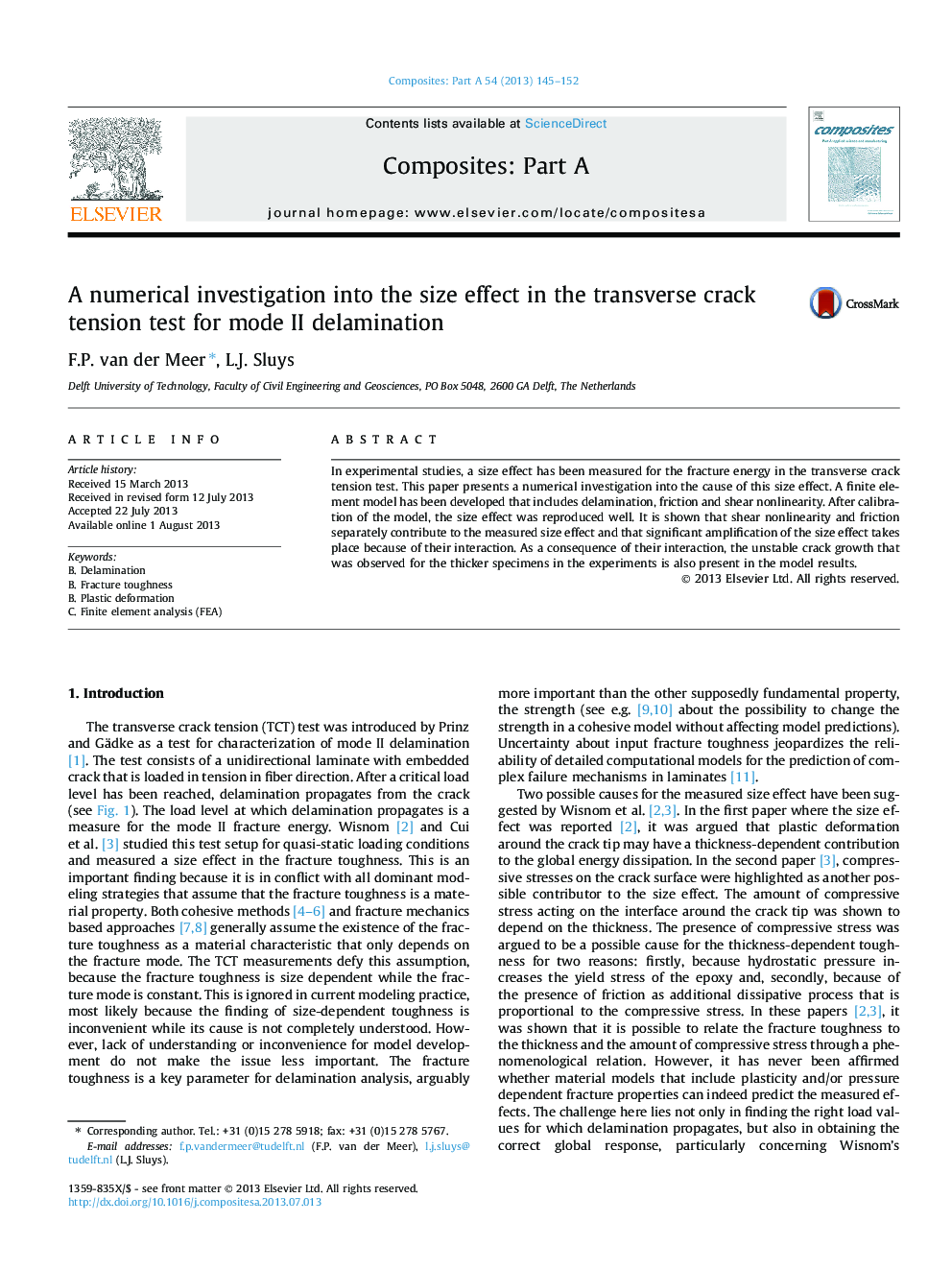| Article ID | Journal | Published Year | Pages | File Type |
|---|---|---|---|---|
| 7892520 | Composites Part A: Applied Science and Manufacturing | 2013 | 8 Pages |
Abstract
In experimental studies, a size effect has been measured for the fracture energy in the transverse crack tension test. This paper presents a numerical investigation into the cause of this size effect. A finite element model has been developed that includes delamination, friction and shear nonlinearity. After calibration of the model, the size effect was reproduced well. It is shown that shear nonlinearity and friction separately contribute to the measured size effect and that significant amplification of the size effect takes place because of their interaction. As a consequence of their interaction, the unstable crack growth that was observed for the thicker specimens in the experiments is also present in the model results.
Related Topics
Physical Sciences and Engineering
Materials Science
Ceramics and Composites
Authors
F.P. van der Meer, L.J. Sluys,
